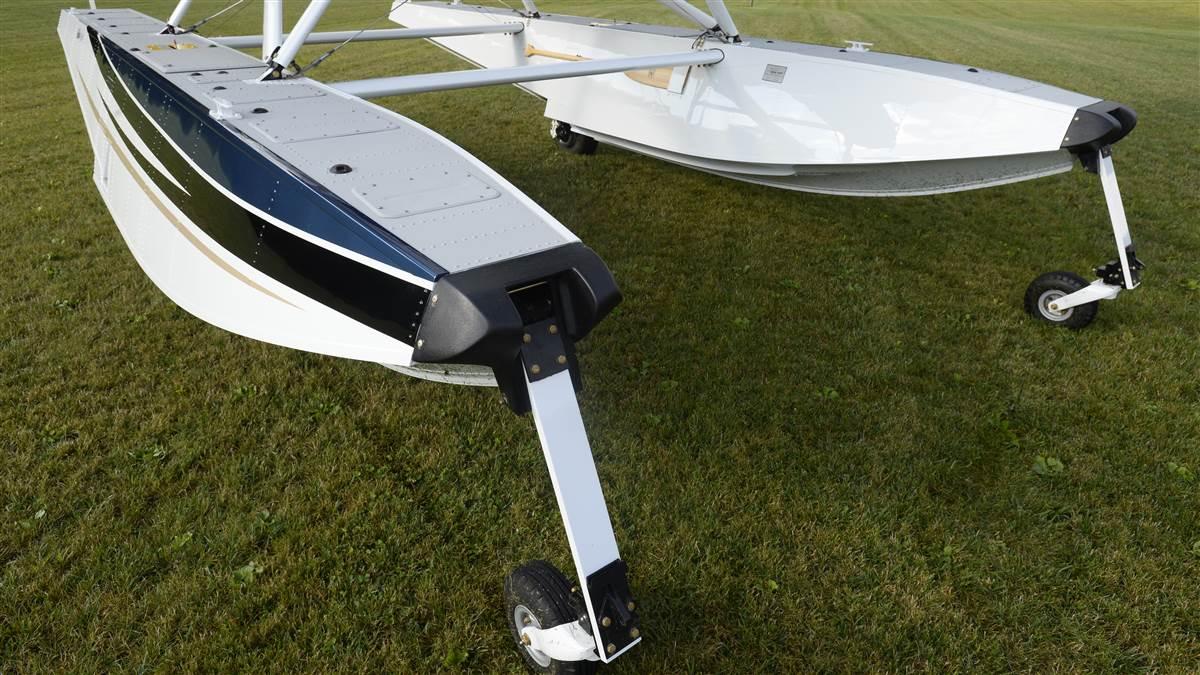
 Modern aircraft floats are hydro- and aerodynamic marvels. Their size, shape, and materials are designed to be light, rugged, and allow airplanes to take off and touch down with as little water resistance as possible. Floats must be able withstand the punishment of operating on rough water (see “Float Flying Fun,” p. 34), and occasionally striking debris.
Modern aircraft floats are hydro- and aerodynamic marvels. Their size, shape, and materials are designed to be light, rugged, and allow airplanes to take off and touch down with as little water resistance as possible. Floats must be able withstand the punishment of operating on rough water (see “Float Flying Fun,” p. 34), and occasionally striking debris.
Floats are typically made from aluminum or composite materials (which have the advantage of resisting rust). And every float contains at least four watertight compartments to keep them from sinking if one or two get ruptured.
Floats all have a number representing their total displacement. A pair of 2,500 floats, for example, has 5,000 pounds of total displacement and, theoretically, can keep an airplane that weighs that much atop the water. But FAA rules for floatplanes are conservative. Each float is required to displace 90 percent of an airplane’s maximum gross weight—so a pair of floats capable of lifting 5,000 pounds total can only be used for a seaplane with a maximum weight of 2,778 pounds or less.
Aircraft floats have many nautically named parts. The bow in front has a bumper to protect against dock strikes; a flat deck on top for stepping on; and cleats for mooring. There’s a keel and skeg at the bottom to help floats track straight ahead; retractable water rudders for low-speed steering; chines where the bottom and side skins come together; and spray rails to prevent water from striking the propeller. The underside of a seaplane float has a forward section called the step, and its channel bottom is shaped like a speedboat for minimum water resistance at high speed. The aft portion of the float is narrower and it helps support the entire weight of the airplane at low speed, or no speed.
Floats can provide some aerodynamic lift in cruising flight, but there’s no getting around the fact that they typically slow an airplane about 10 to 20 percent compared to wheels.
Water World
Splash in
How seaplanes live on water
 Straight floats
Straight floats
Straight floats are great for landing on water, but require rigorous planning—with no wheels, you can’t land at the nearest airport, and not all seaplane landing spots have fuel available.
 Amphibious floats
Amphibious floats
With retractable wheels, amphibious floats seem like the best of both worlds: They can touch down on land or water. But water landings with the wheels extended can cause an amphibious floatplane to flip, so follow checklists religiously.
 Hull
Hull
No floats required. For flying boats like the PBY Catalina of World War II, a purpose-built fuselage replaces floats. A modern instance of the hull is the Icon A5 amphibious Light Sport aircraft.



